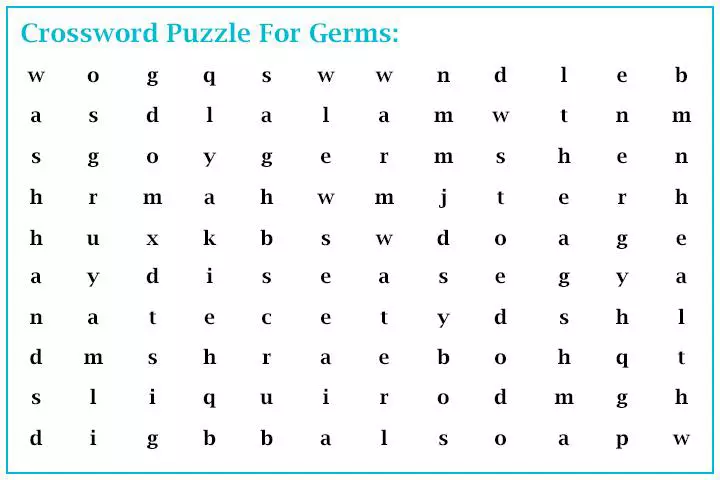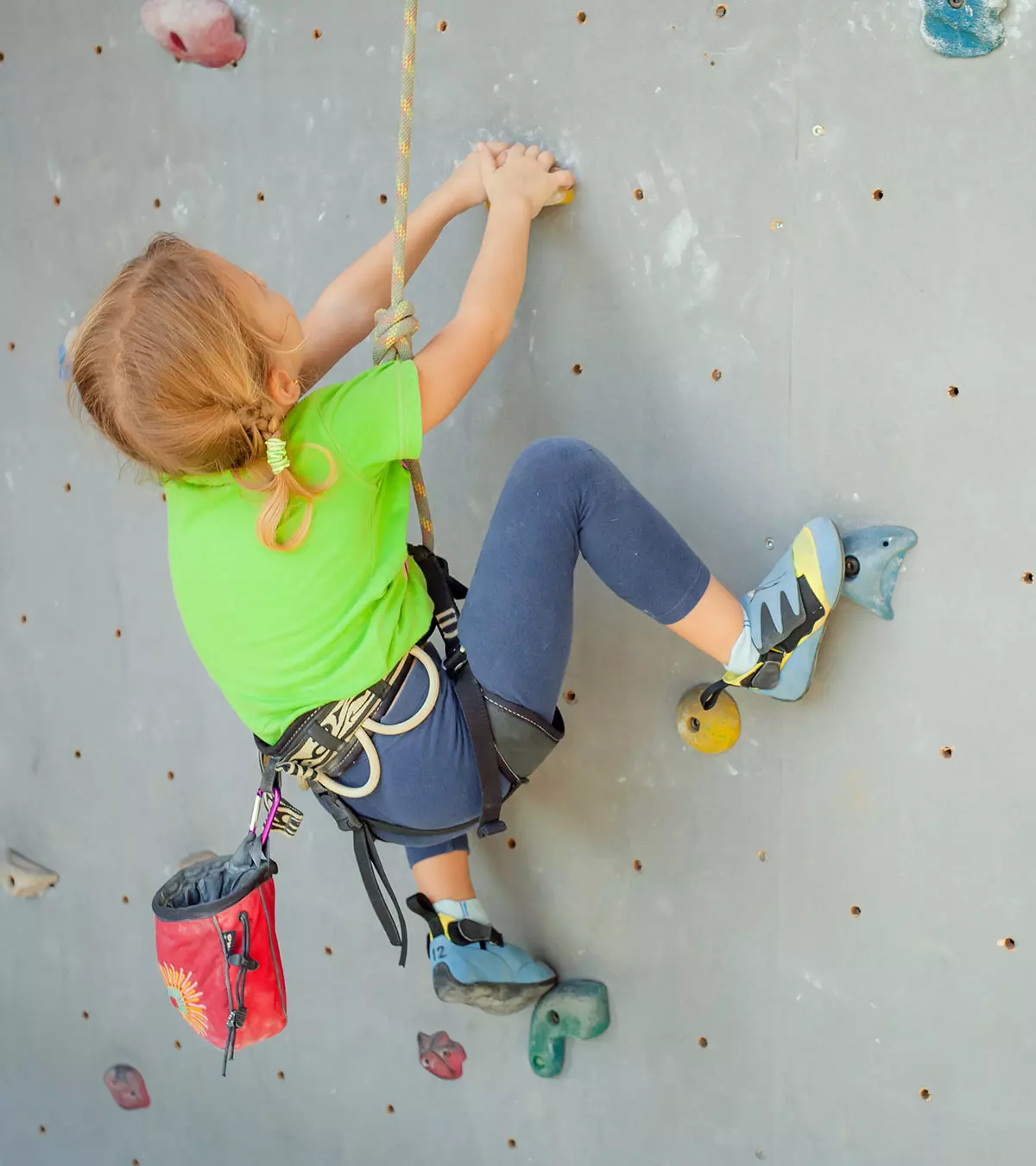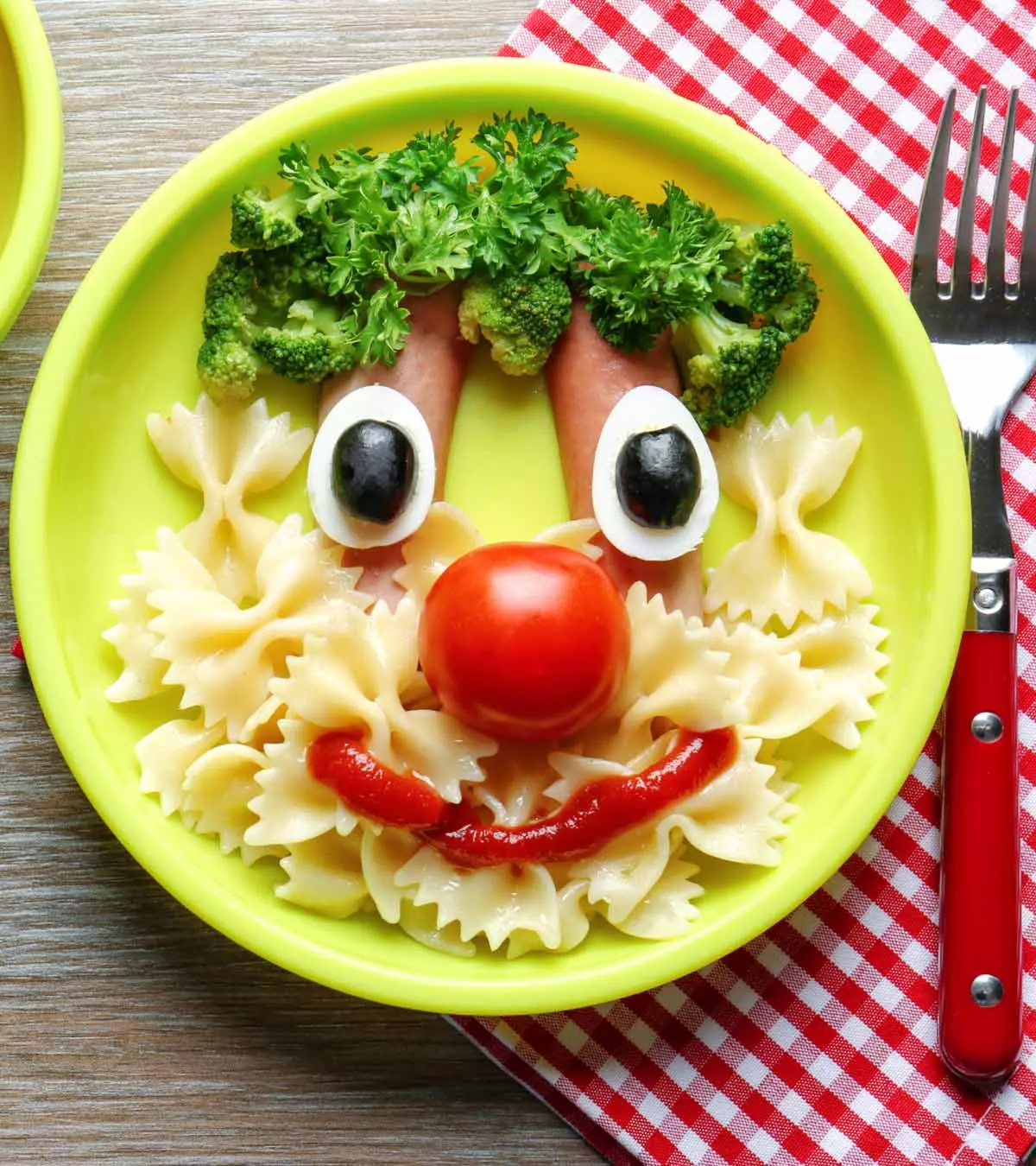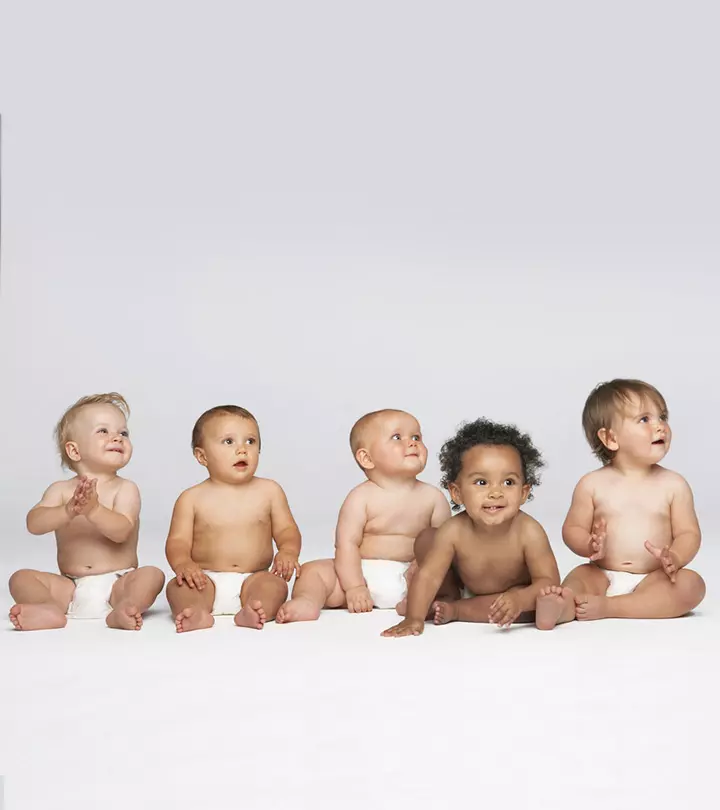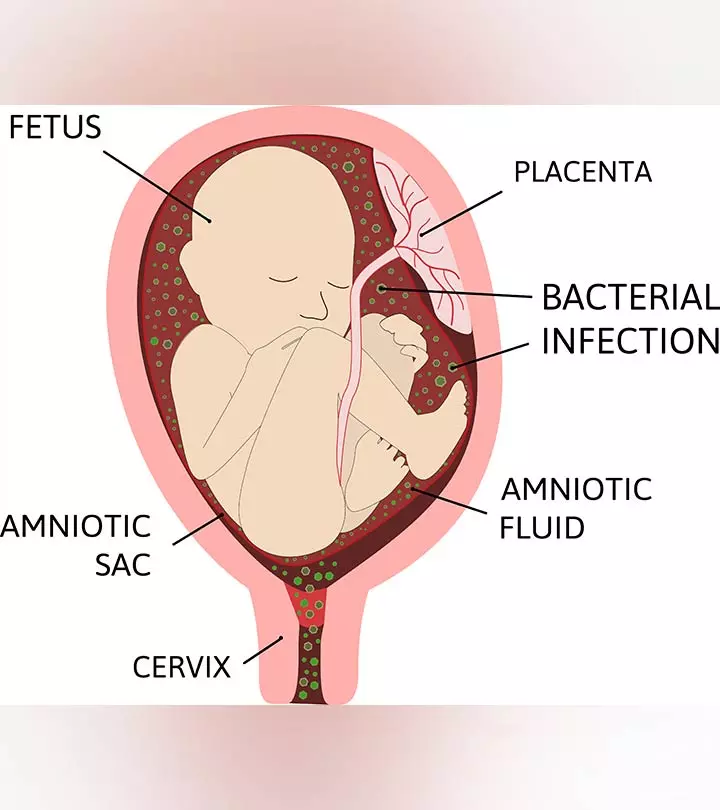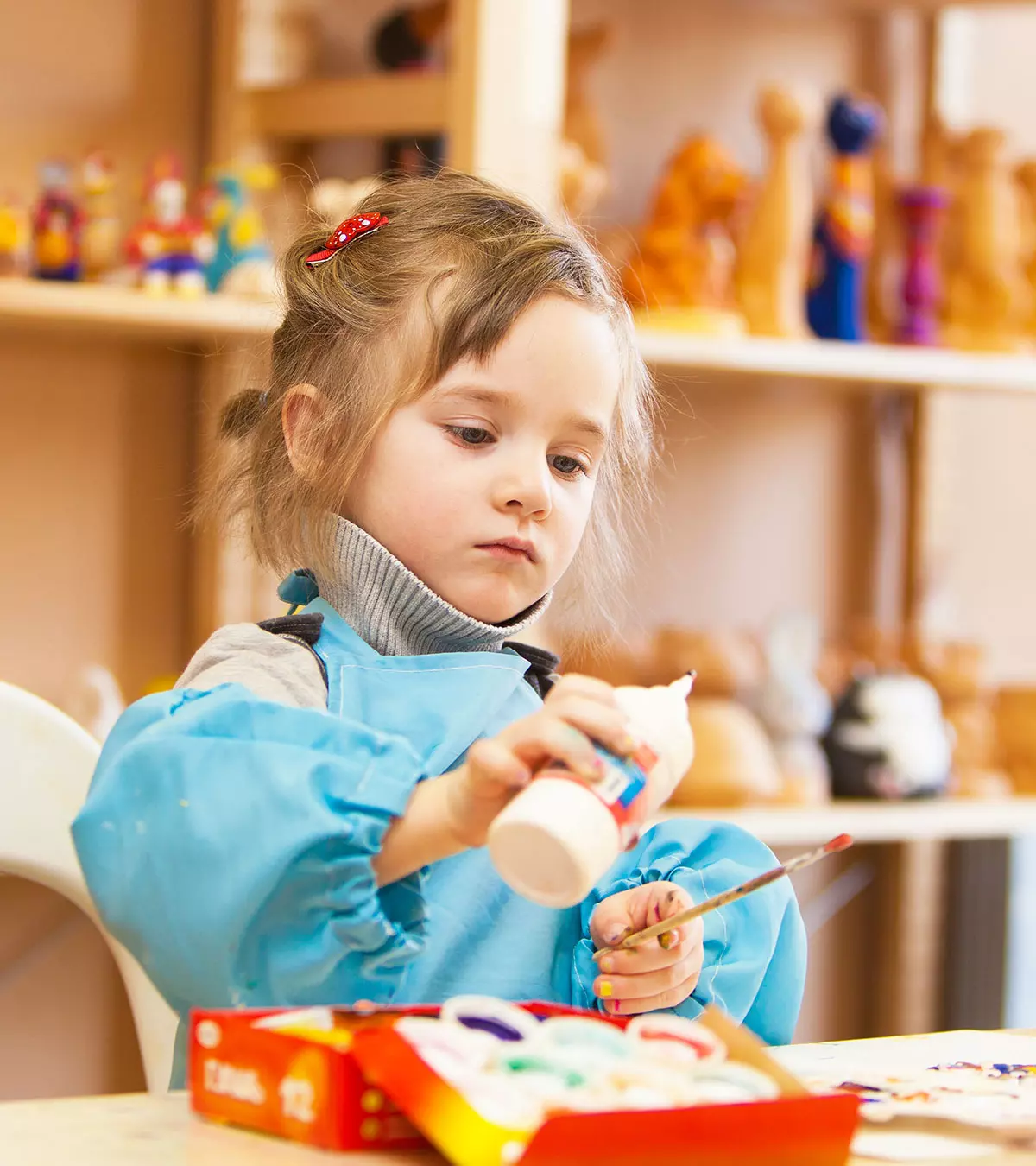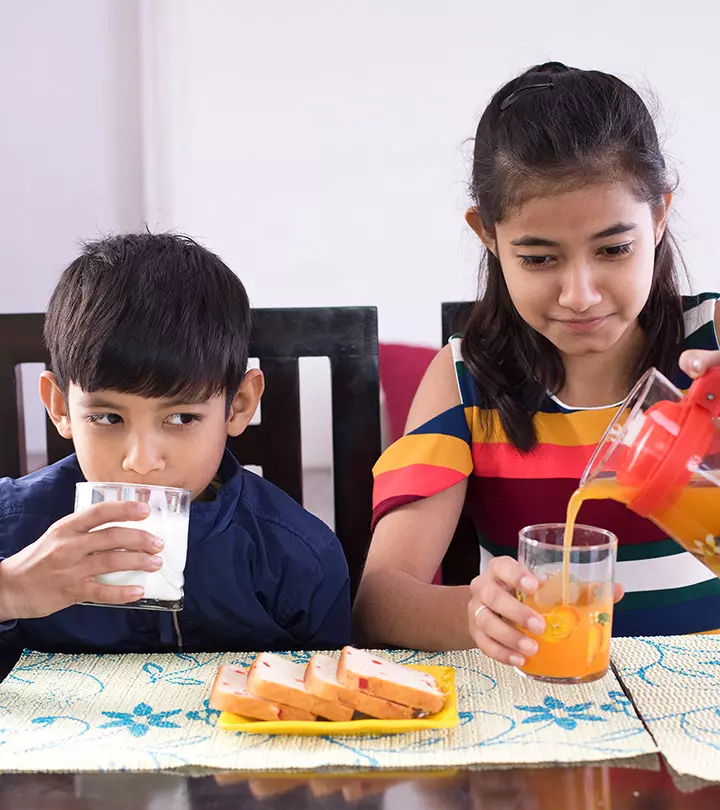

Image: Shutterstock
Teaching children about germs is essential to ensure their safety. It is a major part of maintaining hygiene and preventing them from falling sick. However, the concept of germs is not easily understandable for children, so it has to be taught consciously. From how often to when they should wash and sanitize their hands, they need to be told everything to help them develop hygienic habits. Children often think germs are bugs or something dirty. So, we have brought a list of various germs and other related information to help you explain to your child easily. When they understand the concept of germs, they will be more inclined to keep themselves clean. So, read on to know more.
What are germs?
Germs are tiny living organisms that invade our bodies and can make us sick.
They are found all over and on the objects we use. The germs are tiny and sneaky and can creep into the human bodies without getting noticed.
You can explain to older kids that the germs are so tiny that they cannot be seen with plain eyes, but only through a microscope.
What are the various types of germs?
The main types of germs are fungi, virus, bacteria, and protozoa. They can invade human bodies, animals, and plants and cause diseases.
Share these facts about each of them with your kids:
1. Bacteria:
- They are tiny creatures with only one cell.
- They gather their nutrients from the environment to live. In some instances, they penetrate human bodies to get nourishment.
- Bacteria can reproduce both inside and outside our bodies and cause infections. Some common infections caused by bacteria are ear infections, pneumonia, and sore throats.
2. Virus:
- Viruses live and multiply inside our bodies.
- Most viruses cannot survive if they are not inside a living thing such as a plant, an animal or a person.
- But, viruses can live for a short time on inanimate objects too, such as doorknobs, countertops, plates or mugs.
- The body where a virus goes to live is called its host.
- Depending on the factors such as the type of germs, the kind of surface they are on and the environment, some viruses can survive longer than 24 hours, while some for 30-45 minutes (1).
- Viruses cause diseases like measles, chickenpox, and flu.
3. Fungi:
- Fungi are plant-like organisms. But unlike other plants, fungi cannot produce their food from light, air, and water.
- Instead, they get their nutrition by invading plants, animals or people.
- They love to grow in damp and warm places and are not very dangerous.
- They can cause itchy rashes on the body.
4. Protozoa:
- Protozoa are tiny one-cell organisms that love to grow on moisture and mostly spread diseases through water.
- They can cause infections in the intestine that cause diarrhea, stomach pain etc.
Next, we’ll tell you what germs do once they get into our body.
What do germs do?
Once the germs invade our bodies, they strive to stay there for a long time. They feed on our energy and nutrients and produce toxins inside. These toxins can cause infections like fever, rashes, diarrhea, and vomiting.
Doctors take blood and urine samples to study the disease-causing germs under a microscope. These samples are then sent to a laboratory for more tests so that the doctors can identify which germs are living inside our body.
All this might sound confusing for the child. But explaining abstract concepts to the little ones becomes easy when done in an uncomplicated question-and-answer model.
How to explain about germs to kids?
You can discuss with your kids all about germs — hygiene, cough and sneeze etiquette through the following questions.
1. How do germs spread?
Germs spread when you cough or sneeze without covering your mouth. If you sneeze in your hands and touch objects, the germs get there too.
2. How can we prevent germs from spreading to others?
Maintaining hygiene is the nonpareil way of preventing germs. Here’s what you may tell your kids.
- Cover your nose and mouth with a tissue while sneezing or coughing. Then throw that tissue away.
- If there is no tissue and you sneeze in your hands, wash them with soap and warm water because germs get into the hands and then on touching other objects (like toys, pencils, door knobs, etc.), they spread there too.
- Do not hug, share food, or shake hands with someone who is sick as the germs can spread.
3. What is the right way to wash hands?
Have your kids follow these four simple steps to wash their hands:
Step 1. Wet your hands with warm running water from the tap.
Step 2. Turn one palm upward under the nozzle of the soap bottle and pump out some soap with the other hand. Rub your palms all over, including the fingernails, and then rinse it under running water to wash off.
Step 3. Rub your hands for 20 seconds under the water. So, you can sing a song to make the time fly.
Step 4. Dry your hands using a paper or cloth towel. If you are using a paper towel, dispose of it.
While you want your kids to be aware of hygiene and what causes illness in them, you should not instill fear in them about germs.
Therefore, make the hygiene classes interesting through some fun activities.
Activities to teach children about germs and hygiene
Here are some activities that can help you achieve what you want.
1. Hand washing word scramble
Through this marvelous activity, you can teach your kids basics of hygiene and germs. Have them arrange the words in the right order by giving hints.
i. mgser – These make you sick
Answer: germs
ii. vuris – This is one kind of germ
Answer: virus
iii. dhsna – This is what you must always wash
Answer: hands
iv. gnnirun trwae – This is what you wash your hands with
Answer: running water
v. sapo – This helps you get rid of germs
Answer: soap
vi. cibaeatr – This is another kind of germ
Answer: bacteria
vii. lehahyt – Washing your hands will keep you
Answer: healthy
2. Songs
Kids love rhymes and music. So, why not motivate them to practice good habits the way they like? Here are some songs you can sing while teaching your kids hand-washing.
You can recite this in your own tune.
Wash hands well each day,
To keep germs away,
Scrub with soap and water,
And be on your way!
3. Glitter activity
The activity is designed to make kids understand how small germs are, how they spread, and how to protect oneself from them.
- For this activity, sprinkle some glitter on your kid’s hands. Have him or her wash their hands with plain water.
- Repeat the same with soap and water the second time.
- Ask your child what he/she has observed; “Which method do you see removed more glitter?”
- Then put glitter on your kid’s hands and shoulder to explain how the glitter (here, germs) can spread by touching.
- You can then discuss that glitter is a visible object but germs are so tiny that they cannot be seen with naked eyes, which is why washing hands is important even when the hands seem to be clean.
4. Word search activity
Give your child this word puzzle to solve and check if they have got the concept or not. If they have, they will be able to solve it in a jiffy.
Answers: wash hands, energy, soap, scrub, germs, warm water, health, disease.
While teaching kids about germs, make them repeat what you say so that you know that they understood the concepts.
Teaching kids about germs can increase their awareness of the importance of hygiene. You may explain the types of germs, such as bacteria, viruses, fungi, and protozoa, and how they can enter the body. Also, explain how these germs can make them sick upon entering their body. Use age-appropriate terms to help children understand better. Further, teach them ways to prevent germs, such as washing or sanitizing their hands before eating and after using the toilet and covering their mouth and nose while coughing or sneezing.
References
- P. Vasickova et al.; (2010); Issues Concerning Survival of Viruses on Surfaces.
https://www.ncbi.nlm.nih.gov/pmc/articles/PMC7091010/
Community Experiences
Join the conversation and become a part of our nurturing community! Share your stories, experiences, and insights to connect with fellow parents.
Read full bio of Sagari Gongala


